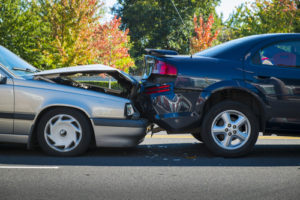Safety Tips and Facts for Winter Driving
Safety Tips and Facts for Driving During the Winter Season
 Driving during the winter season can be harrowing and dangerous for travelers on the road. According to The U.S. Department of Transportation, each year, 24 percent of weather-related vehicle crashes occur on snowy, slushy, or icy pavement and 15 percent happen during snowfall or sleet. In addition to those numbers, roughly 1,300 people are killed and more than 116,800 people are injured in vehicle crashes annually due to these winter conditions on the roads. During this time of the year, it is important to know the safety tips to ensure you and your vehicle are prepared for the winter weather driving.
Driving during the winter season can be harrowing and dangerous for travelers on the road. According to The U.S. Department of Transportation, each year, 24 percent of weather-related vehicle crashes occur on snowy, slushy, or icy pavement and 15 percent happen during snowfall or sleet. In addition to those numbers, roughly 1,300 people are killed and more than 116,800 people are injured in vehicle crashes annually due to these winter conditions on the roads. During this time of the year, it is important to know the safety tips to ensure you and your vehicle are prepared for the winter weather driving.
Car Maintenance During Winter
Driving during the winter season comes with a lot of challenges. In order to reduce any issues that may occur along the way, it is important to keep your vehicle in good working order and make any necessary changes for the winter.
Battery
It is important to make sure your battery is strong and does not need to be replaced. All batteries have a different CCA. This refers to the temperature at which the battery can start an engine in cold temperatures. Cars sold in colder areas will be equipped with a stock battery with a higher CCA since the car will be expected to start in extremely cold temperatures.
Typical “Cold Cranking Amps” figures can range from 400 – 750 A in a typical automotive battery. It is extremely necessary to make sure your car is equipped with the correct battery for the type of weather your car will be in. Switching out your battery is an easy and quick process.
Lights
Check all lights before driving, this includes headlights, emergency hazards, blinkers, taillights, brake lights, and parking lights. This is necessary before driving at any time, in any weather condition. Driving without working lights will increase your chances of being involved in an accident.
Tires
Having good traction and tread wear on tires is essential for driving during the winter. In many places across the U.S., winter tires are used in areas that receive large amounts of snow every year. Winter tires have deeper tread depths which help reduce snow buildup and provide better traction on the snow. All-season radial tires should only be used in locations that receive light snowfall on occasion. In some instances, there may not be enough traction on your tires when trying to drive in snow, in this case, snow chains or even studded tires can be used. Make sure to check tire pressure, tire balance, and wheel alignment frequently before driving in the snow.
Windshield Wipers
Make sure your windshield wipers work effectively and are not worn out and old. During a snowstorm, it is essential to have working wipers in order to see, without them it makes driving close to impossible. Check your windshield wiper fluid reservoir and ensure that antifreeze wiper fluid is filled to a decent amount. Summer wiper fluid easily freezes and won’t be able to be used in colder temperatures. De-Icing windshield fluid is necessary for areas with extreme cold. It is protected up to -40°F, won’t freeze, and can melt away a thin layer of ice on your windshield.
Driving During Winter Season
Before going out onto the roads, check the forecast of the area around you. If the forecast does not look great, it might be best to wait to travel if possible. If you must travel, make sure your vehicle is prepared for the snow. Before leaving warm up the car outside of the garage before driving and ensure everything is running properly. In the meantime, brush and scrape off all snow and ice from the car and make sure all windows are cleared off. Wipe off camera lenses and side mirrors to better help see the area around you.
When on the roads, drive slowly and follow the speed of other drivers on the road, it is a good idea to increase the following distance between you and other cars to allow for a stop to be made if needed. On roads that are covered in ice, it is harder to slow down, slowing down earlier than you think will help prevent skids. When going uphill on an icy road, do not stop if possible. Stopping will lock the tires and cause the car to slide back down the hill. Remember to always be cautious and aware of all surroundings when driving.
Long-Distance Trips
To prepare for long-distance trips, check the weather before starting your drive and plan the best time to leave. Before leaving, make sure someone is aware of the route and trip you are taking in case of an emergency. Plan fuel stops along the way so running out of gas along the way isn’t an option and fill up as soon as you can when your tank starts to get low. Try not to travel alone, long road trips while snowing can be tiring. Falling asleep at the wheel is dangerous and can put your own and other people’s lives in danger. Having another person to switch driving with can help prevent accidents.
- If you do find yourself in the situation where you are stuck:
- Stay in your vehicle
- Turn on hazards to be easily seen from the road
- Contact authorities to inform them of your situation
- Stay warm
- Use as little fuel as possible and start your car every 20 minutes
- Pack a winter driving kit
Winter Driving Kit
In an instance where you get stuck in a snowstorm for a long period of time, it is helpful to have a winter driving kit in the trunk of your car for emergencies.
- To be packed in the kit includes:
- Snow chains
- Tow rope
- Snowbrush and scraper
- Small shovel
- Jumper cables
- Extra windshield wiper fluid
- Flashlight
- Blanket
- Warm jacket, pants, gloves
- First aid kit
- Food and water
If you find yourself involved in a car accident due to inclement weather, you will want to contact a personal injury attorney to provide legal advice and options.





Sorry, the comment form is closed at this time.